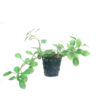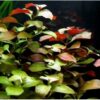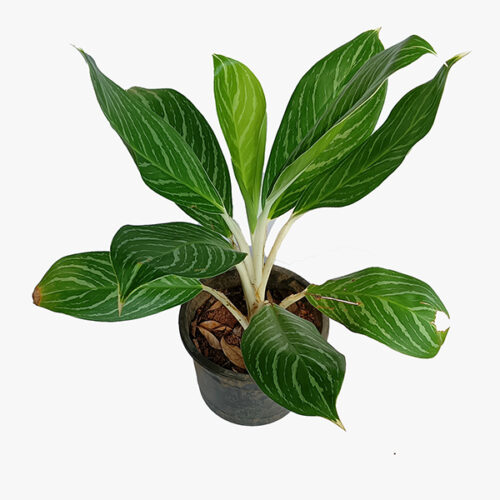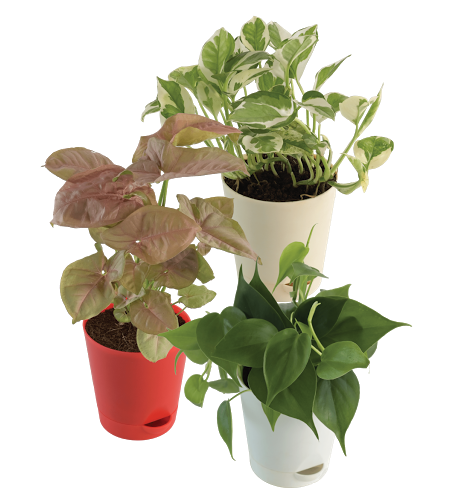Ludwigia palustris [Tc] is distinguished by its deep bright red leaves and abundant stem and side shoot growth. Lowest lighting increases the internodal distance (the gap between the leaves), the leaves maintain a duller green/red colour, and the lower leaves may die off. It does, however, generate aerial roots, which can be left alone or pruned if desired. Ludwigia palustris, another addition to our top red aquarium plants collection, is a typical herbaceous plant that can attract one’s attention when beautifully arranged in an aquarium. It is a versatile sort of stem plant that is not very demanding, fragile, or delicate to manage. This plant is undeniably a fixture in the aquascape trade, whether submerged or emersed, and appears to be one of the few popular florae for beginning hobbyists. The plant of cosmopolitan origin can essentially flourish in any season of the year. Palustris is a Latin term that means “of the marsh,” describing the species’ normal habitat. It is more suited to palustrine or marshy environments, as the name Ludwigia palustris suggests. When grown, the leaves are opposite, 1 – 3.5cm long, and vary in form. The leaf margins range from round to oval to elliptic. The prominent leaf veins have a pinkish hue, which is also shared by the roots. L. palustris can be seen floating in standing water or producing mats in muddy soil in aquatic-bed to emergent wetlands. The dormant plant can withstand prolonged flooding, such as in a seasonal lake, and will begin to develop as soon as the water level decreases. Its companions include Veronica (Veronica americana), Watson willow herb (Epilobium ciliatum), and skunk cabbage (Lysichiton americanum). Ludwigia palustris is a widely grown worldwide species used as an aquatic ornamental and aquarium plant. It has become a highly invasive weed of permanent freshwater wetlands, ponds, waterways, and riparian habitats after escaping cultivation. L. palustris is a prolific seeder with the ability to develop as an aquatic or semiaquatic herb. It also spreads easily by roots at nodes and dispersing stem fragments in water flow. It is currently considered invasive in Australia and Guadeloupe, but it is also considered a weed in Bermuda, Hawaii, and New Zealand.
Ludwigia palustris [Tc], also known as marsh seedbox, Hampshire-purslane, and water purslane, is a flowering plant in the evening primrose family. This is a semi-aquatic or aquatic perennial herb that grows in moist to wet to flooded conditions. It can be a weed at times. Palustris is Latin for “of the marsh,” indicating the species’ common habitat. Its native range is unknown, but it includes parts of the Americas; it can be found on most continents and spreads quickly enough to become naturalised. It is also grown as an aquarium plant. It was discovered in 1827 in England.Ludwigia Inclinata is a lovely plant with striking gold and red leaves that stand out against the usual green foliage. This plant can be difficult to maintain, but the beautiful colour and unique shape are well worth the extra effort. Plants of Ludwigia palustris [Tc] have oblong, rounded leaves with a wavy texture that grow in opposite pairs along the stem. This plant will branch easily if pruned, providing a bushy filler for the mid- or background of your tank. If you keep this plant in a small tank, you should prune it on a regular basis because it can quickly grow to the top of your tank.Ludwigia palustris [Tc] prefers light that is medium to bright. The plant will not grow well or display its beautiful colours if not given enough light. Consistent micronutrient dosing will accelerate plant growth. A high iron content will highlight the plant’s red tones. CO2 injection is strongly advised for the cultivation of this plant. The plant can be grown in either submerged or emersed conditions.
Plants can be propagated by taking cuttings from the main stem and replanting them in the substrate. Ludwigia can be quite delicate. Take care when handling this aquarium plant. Make no drastic changes to the aquarium. Unstable parameters will cause the aquarium plant to melt and rot.
Is CO2 required by Ludwigia palustris [Tc]?
CO2 injection is strongly advised for the cultivation of this plant. The plant can be grown in either submerged or emersed conditions. Plants can be propagated by taking cuttings from the main stem and replanting them in the substrate.
Is Red Ludwigia palustris [Tc] a simple plant to grow?
Overall, Ludwigia Natans Super Red is a low-maintenance plant. Propagation is extremely simple and quick. When kept in good conditions, this plant will produce a large number of small plants from a few stems.
Does Ludwigia palustris [Tc] require fertilizer, and if so, how frequently?
Although not a heavy feeder, this plant, like all red species, requires adequate iron to maintain healthy growth. These requirements can be met by taking a supplement like Seachem Flourish Iron in small doses on a weekly basis.


![Ludwigia palustris [Tc]](https://elysianflora.com/wp-content/uploads/2021/12/ludwigia-palustris-1.jpg)
![Ludwigia palustris [Tc] - Image 2](https://elysianflora.com/wp-content/uploads/2021/12/Plant_35.jpg)






Reviews
There are no reviews yet.